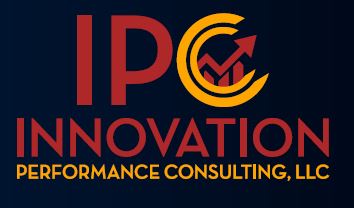
Organizations face numerous challenges, many of which may not threaten their survival if poorly managed. However, one critical issue that can determine an organization’s success or failure is low employee engagement (EE). EE is a multifaceted construct, as evidenced by its extensive number of associated definitions. A review of the literature reveals over 50 distinct definitions of the term, underscoring both the difficulty in defining it and its significance to organizations of all types and sizes. Scholars would not have devoted so much effort to exploring and defining EE if it were not of considerable importance.
The inquisitive reader might ask: What does EE have to do with “Quiet Quitting”? Quite simply, quiet quitting is a manifestation of low EE. Quiet quitting occurs when employees do only the bare minimum required of their jobs, avoiding any effort beyond formal responsibilities. This behavior stands in stark contrast to Schaufeli and colleagues’ definition of EE as a “positive, fulfilling, work-related state of mind characterized by vigor, dedication, and absorption “(Schaufeli et al., 2006, p. 6). Employees who quietly quit lack the vigor and dedication that characterize engagement, reducing their role to merely collecting a paycheck. This lack of engagement has real consequences for organizations. Research demonstrates that engaged employees are more productive, positively influence their organizations, and actively contribute to their organization’s success (Abdullahi et al., 2021). By contrast, disengaged employees, such as those who quietly quit, fail to align with their organization’s vision or go the extra mile to support its goals (Govender & Bussin, 2020).
When this disengagement becomes pervasive, its impact on organizations grows significantly. Swiftly addressing quiet quitting is crucial for HR leaders, as it directly impacts productivity, stifles innovation, and undermines employee retention. Disengaged employees frequently undermine an organization’s ability to meet its objectives, resulting in reduced productivity and directly impacting profitability. This erosion of performance can pose a serious threat to the organization’s long-term viability.
Innovation, once the domain of the tech industry, is now essential across all sectors. Organizations must adapt to rapid changes in their environments to remain resilient. However, with disengaged employees, innovation becomes unattainable. Without innovation, organizations become vulnerable to market disruptions and face an increased risk of collapse. Organizations build resilience and reduce their susceptibility to environmental volatility by fostering innovation.
Retention is equally critical. No organization can be resilient or productive if its workforce leaves in droves. Silent dissatisfaction often leads to attrition, making it essential for HR leaders to address quiet quitting directly. There are many ways to tackle this issue, but three strategies are particularly impactful.
1. Train Leaders in Emotional Intelligence
Leaders must develop emotional intelligence (EI) to connect with and motivate their employees authentically. EI involves the ability to recognize, understand, and manage one’s emotions while also being attuned to the emotions of others. People are not robots; their lived experiences—personal or professional—profoundly influence their behavior and performance at work. By cultivating genuine empathy, leaders can acknowledge and validate employees’ challenges, whether it’s balancing work and family, coping with financial stress, or navigating health issues. This level of understanding goes beyond superficial gestures and demonstrates a sincere commitment to supporting employees. Employees rarely leave organizations; they leave toxic leaders and micromanagers who make the workplace intolerable—leaders who prioritize production over people. Shifting this dynamic—from one where leaders focus solely on results to one where they balance concern for both production and people—can significantly improve retention. Leaders with high EI can foster trust, loyalty, and meaningful connections, creating an environment where employees feel valued and understood.
2. Promote Work-Life Balance
Leaders must prioritize work-life balance, recognizing that employees need time with their families and an opportunity to disconnect from work. Work-life balance prevents burnout and mental health issues, fostering a healthy workforce. Moreover, promoting work-life balance benefits organizations by boosting productivity and positively impacting the bottom line. Beyond being a moral imperative, supporting employees’ well-being is a strategic advantage.
3. Foster Open Communication Channels
Creating open communication channels is vital. Leaders should not fear employees’ opinions but instead encourage respectful dialogue and provide a safe space for employees to voice their concerns. Arrogant leaders often believe they hold a monopoly on knowledge—a mindset that leads to poor decision-making with disastrous outcomes. When employees feel safe expressing themselves, they are more likely to use their imagination and creativity for the organization’s benefit. Psychological safety, the assurance that individuals can express themselves without fear of judgment, discrimination, or retaliation, enables employees to freely disclose their needs or challenges. This fosters a workplace culture rooted in trust, respect, and collaborative innovation.
Quiet quitting is not a problem employees create; it signals that organizations must do better. By addressing its root causes and prioritizing engagement, HR leaders can transform quiet quitters into active contributors. The future of work calls for organizations to listen, adapt, and invest in their people, fostering an environment where individuals can thrive and contribute meaningfully.
References
Abdullahi, M. S., Raman, K., Solarin, S. A., & Adeiza, A. (2021). Employee engagement as a mediating variable on the relationship between employee relation practice and employee performance in a developing economy. Journal of Applied Research in Higher Education, 15(1), 83-97. https://doi.org/10.1108/jarhe-06-2021-0222
Govender, M., & Bussin, M. H. R. (2020). Performance management and employee engagement: A South African perspective. SA Journal of Human Resource Management, 18. https://doi.org/10.4102/sajhrm.v18i0.1215
Schaufeli, W. B., Bakker, A. B., & Salanova, M. (2006). The measurement of work engagement with a short questionnaire. Educational and Psychological Measurement, 66(4), 701-716. https://doi.org/10.1177/0013164405282471

